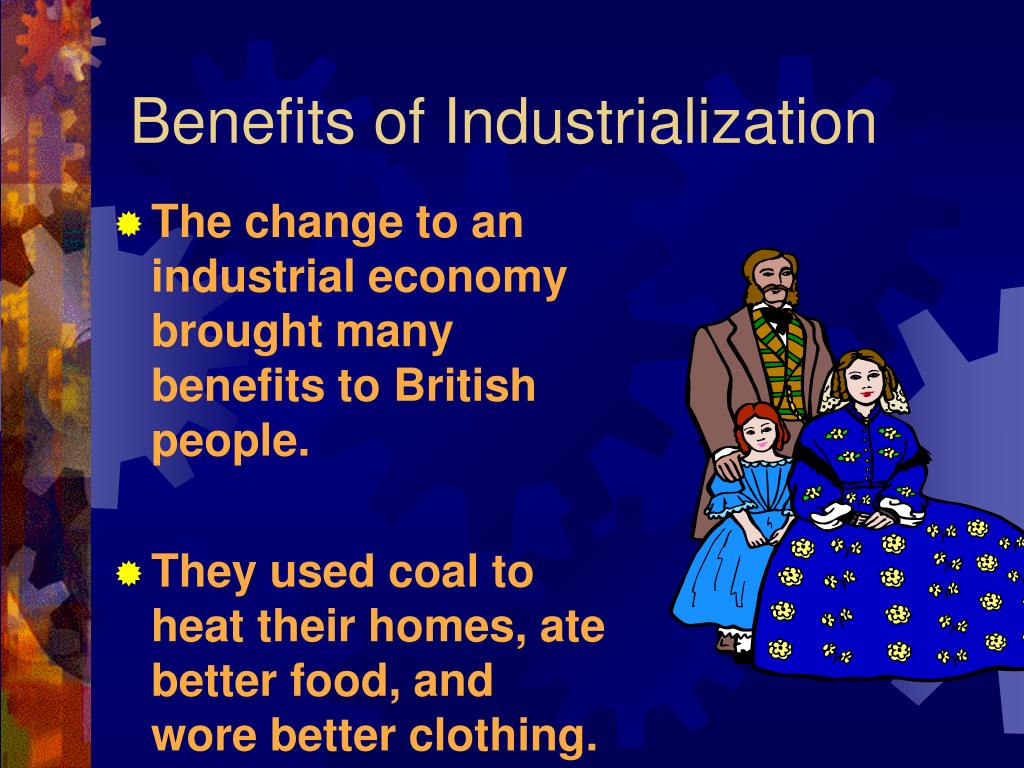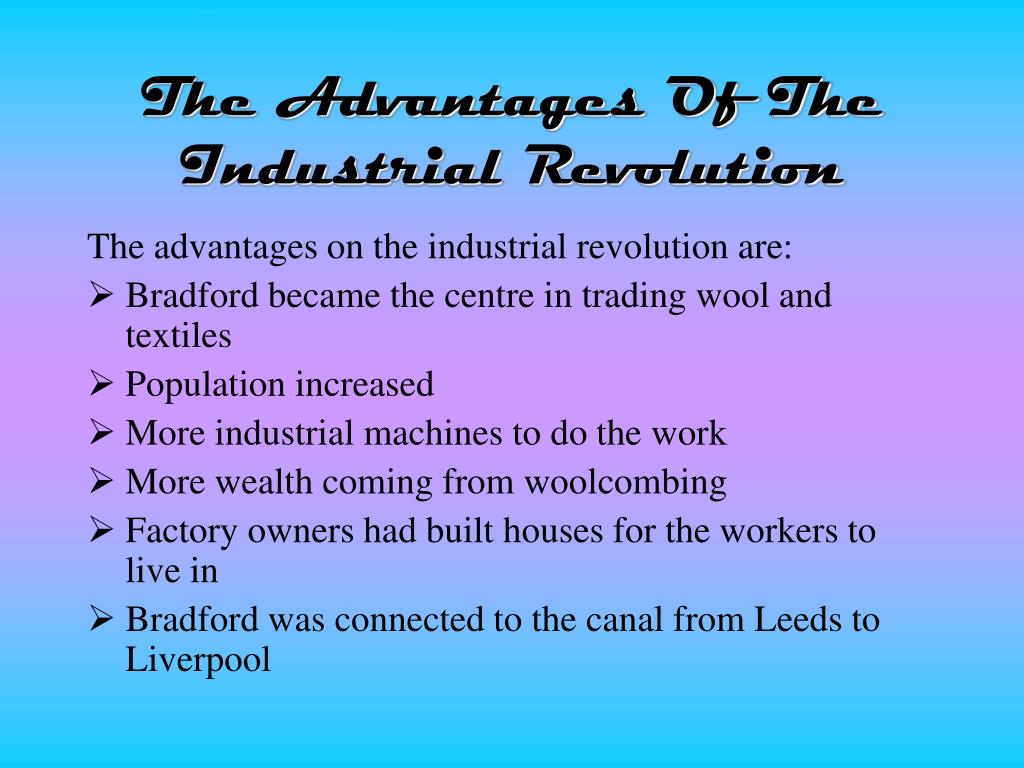Which Was A Main Benefit Of Industrialization

Imagine a world lit only by flickering candlelight, where journeys are measured in days rather than hours, and the vast majority of people toil from sunrise to sunset just to put food on the table. This wasn't some distant, barbaric past; it was the reality for most of humanity before the dawn of the Industrial Revolution, a period of transformative change that reshaped societies in ways previously unimaginable.
At the heart of this transformation lies a pivotal question: What was the main benefit of industrialization? While its legacy is complex, marked by both progress and profound challenges, the single most significant advantage was the unprecedented and sustained rise in overall standards of living for a large segment of the population.
Before we delve into the specifics, let's step back and understand the pre-industrial world. Agriculture dominated, with most people living in rural communities and dependent on farming for survival. Life expectancy was low, disease was rampant, and opportunities for advancement were extremely limited.
Technological innovation was slow, and production remained largely artisanal. James Watt's improved steam engine in the late 18th century marked a turning point, ushering in a new era of mechanization. This invention, coupled with advancements in metallurgy and other fields, fueled the growth of factories and the mass production of goods.
One of the immediate and most visible benefits of industrialization was the increase in the availability and affordability of goods. Mass production lowered costs, making items that were once luxuries accessible to a wider range of people. Textiles, for example, became more readily available, leading to better clothing and hygiene.
The rise of factories created new employment opportunities, drawing people from rural areas to urban centers. While working conditions were often harsh, particularly in the early stages of industrialization, these jobs provided a source of income for many families, contributing to improved living standards. According to data from the Economic History Association, real wages gradually increased over the course of the 19th century in industrialized nations.
Industrialization also spurred innovation and technological progress at an unprecedented pace. The development of new machines, processes, and materials led to improvements in transportation, communication, and medicine. The invention of the railway, for example, revolutionized transportation, facilitating the movement of goods and people over long distances.
The spread of education was another crucial benefit. As industries demanded a more skilled workforce, governments and private organizations invested in education. Literacy rates rose, empowering individuals with new knowledge and skills, opening up opportunities for social mobility.
Improvements in public health also contributed to rising living standards. The development of new medicines, sanitation systems, and water purification technologies helped to combat disease and improve overall health outcomes. Edwin Chadwick's reports on sanitary conditions in England played a significant role in promoting public health reforms.
It's important to acknowledge that industrialization had its dark side. The early factories were notorious for their poor working conditions, long hours, and low wages. Pollution became a major problem in urban areas, and the rapid growth of cities led to overcrowding and social problems.
Child labor was widespread, and many children were forced to work in dangerous conditions. The gap between the rich and the poor widened, creating social tensions and inequalities.
However, it's crucial to view these challenges within the historical context. While the negative aspects of industrialization are undeniable, they also spurred social and political reforms. Labor movements emerged, advocating for better working conditions, higher wages, and the right to organize.
Governments gradually enacted legislation to protect workers, regulate industries, and improve public health. These reforms, while often slow and hard-fought, ultimately helped to mitigate the negative consequences of industrialization and ensure that its benefits were more widely shared.
The long-term impact of industrialization on living standards is undeniable. According to the World Bank, global average life expectancy has more than doubled since the pre-industrial era. Poverty rates have fallen dramatically, and access to education, healthcare, and other essential services has improved significantly.
The rise in living standards was not limited to industrialized nations. As these countries expanded their influence and trade, they brought new technologies, ideas, and goods to other parts of the world, contributing to economic development and improved living conditions in many developing countries.
Of course, the benefits of industrialization have not been evenly distributed, and inequalities persist both within and between countries. Climate change, a direct consequence of industrial activity, poses a significant threat to global living standards. But, continuous technological innovation, coupled with sustainable practices, continues to offer promising solutions for many.
Moreover, as we grapple with the challenges of the 21st century, we can draw valuable lessons from the Industrial Revolution. It reminds us that technological progress can be a powerful force for good, but it must be guided by ethical considerations and a commitment to social justice.
Looking back, the Industrial Revolution was a watershed moment in human history. While it brought about significant challenges, its primary contribution was the unprecedented rise in overall standards of living. From the availability of affordable goods to the expansion of education and healthcare, industrialization laid the foundation for the modern world we live in today. It’s a world where, despite the ongoing challenges, a greater proportion of humanity enjoys a higher quality of life than ever before.
The legacy of industrialization is a complex tapestry woven with threads of both progress and hardship. It serves as a powerful reminder that technological advancement, while capable of driving significant improvements in living standards, must be accompanied by a commitment to social responsibility and environmental sustainability. As we continue to innovate and shape the future, we must learn from the past and strive to create a world where the benefits of progress are shared by all.







:max_bytes(150000):strip_icc()/industrialization-Final-4c8cc5800e15418e8cb62cced858f8e5.jpg)





:max_bytes(150000):strip_icc()/Industrial-Revolution-V2-7493ff6ba09e4612b1c1e3d5c2eb49c5.jpg)




